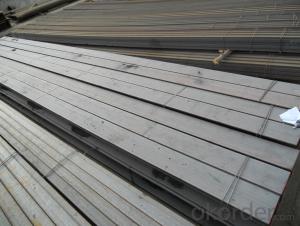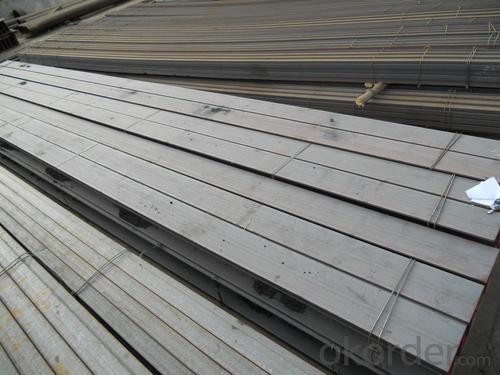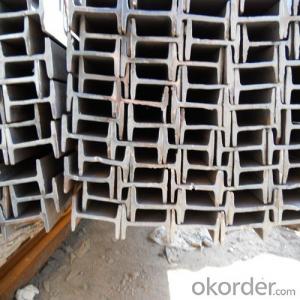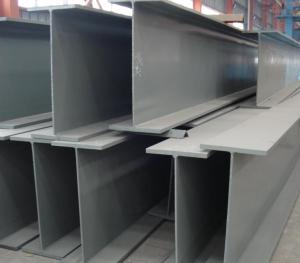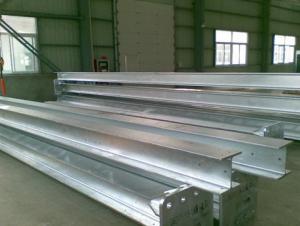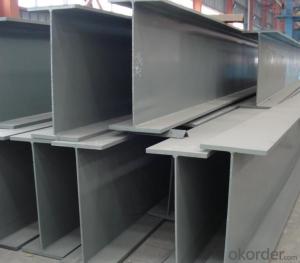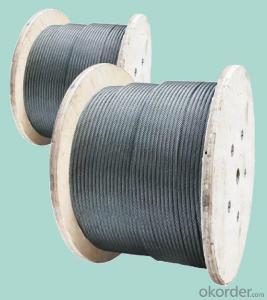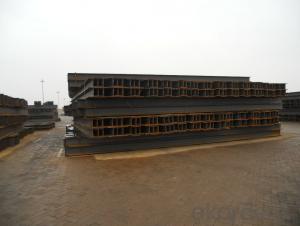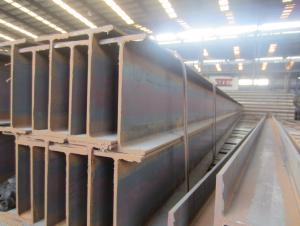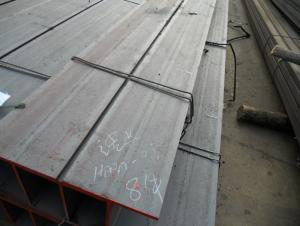Hot Rolled Steel H-Beam using for Medium Scale Bridge
- Loading Port:
- Tianjin
- Payment Terms:
- TT OR LC
- Min Order Qty:
- 10000 m.t.
- Supply Capability:
- 250000 m.t./month
OKorder Service Pledge
OKorder Financial Service
You Might Also Like
Specification
Product Description:
Product Description:
OKorder is offering Hot Rolled Steel H-Beam using for Medium Scale Bridge at great prices with worldwide shipping. Our supplier is a world-class manufacturer of steel, with our products utilized the world over. OKorder annually supplies products to European and Asian markets. We provide quotations within 24 hours of receiving inquirys and guarantee competitive prices.
Product Applications:
Hot Rolled Steel H-Beam using for Medium Scale Bridge are widely used in the construction of buildings and bridges, and the manufacturing, petrochemical, and transportation industries.
Product Advantages:
OKorder's Hot Rolled Steel H-Beam using for Medium Scale Bridge are durable and resist corrosion.
Main Product Features:
· Premium quality
· Prompt delivery & seaworthy packing (30 days after receiving deposit)
· Corrosion resistance
· Can be recycled and reused
· Mill test certification
Product Specifications:
Specifications of Hot Rolled Steel H-Beam for Medium Scale Bridge
1. Standard: GB700-88, .
2. Grade: Q235, SS400 or Equivalent
3. Length:10m, 12m as following table
4. Invoicing on theoretical weight or actual weight as customer request
5.Payment: TT or L/C
6. Sizes:
SIZE(mm) | DIMENSION(kg/m) |
150*150 | 31.1 |
200*100 | 20.9 |
248*124 | 25.1 |
250*125 | 29 |
Usage & Applications of Hot Rolled Steel H-Beam using for Medium Scale Bridge
Commercial building structure ;Pre-engineered buildings; Machinery support structure; Prefabricated structure; Medium scale bridges; Ship-building structure. etc.
Packaging & Delivery of Hot Rolled Steel H-Beam using for Medium Scale Bridge
1. Packing: it is packed in bundles by steel wire rod
2. Bundle weight: not more than 3MT for bulk vessel; less than 3 MT for container load
3. Marks:
Color marking: There will be color marking on both end of the bundle for the cargo delivered by bulk vessel. That makes it easily to distinguish at the destination port.
Tag mark: there will be tag mark tied up on the bundles. The information usually including supplier logo and name, product name, made in China, shipping marks and other information request by the customer.
If loading by container the marking is not needed, but we will prepare it as customer request.
4. Transportation: the goods are delivered by truck from mill to loading port, the maximum quantity can be loaded is around 40MTs by each truck. If the order quantity cannot reach the full truck loaded, the transportation cost per ton will be little higher than full load.
5. Delivered by container or bulk vessel
Production flow of Hot Rolled Steel H-Beam using for Medium Scale Bridge
Material prepare (billet) —heat up—rough rolling—precision rolling—cooling—packing—storage and transportation
FAQ:
Q1: Why buy Materials & Equipment from OKorder.com?
A1: All products offered byOKorder.com are carefully selected from China's most reliable manufacturing enterprises. Through its ISO certifications, OKorder.com adheres to the highest standards and a commitment to supply chain safety and customer satisfaction.
Images:
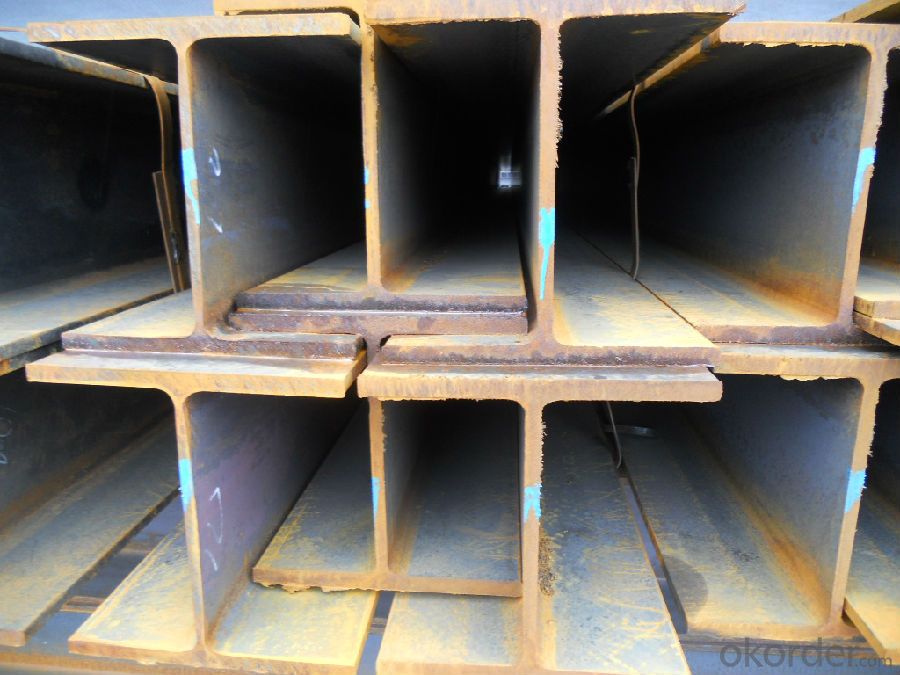
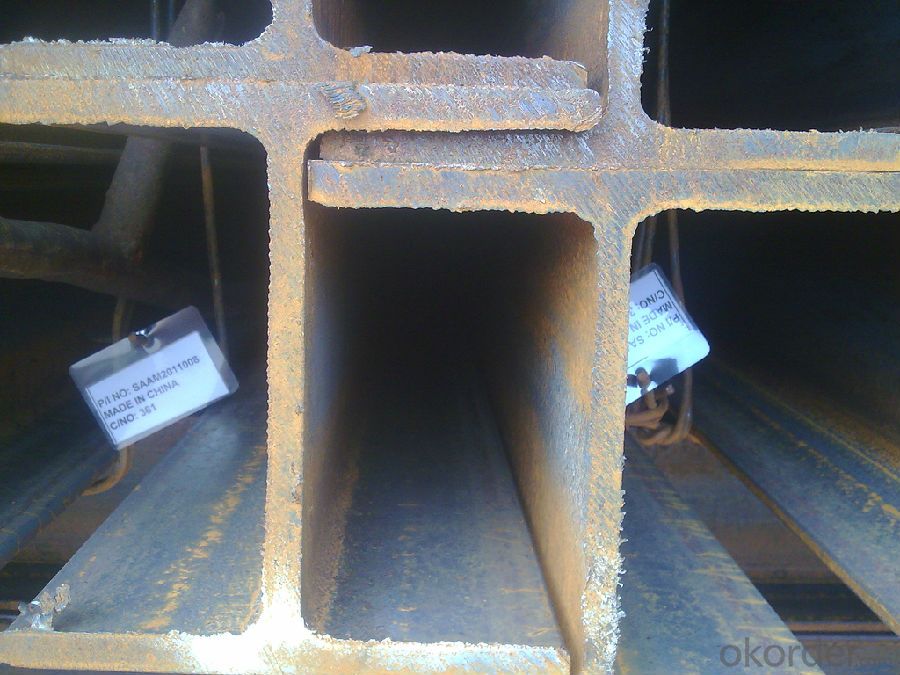

- Q: Are steel H-beams suitable for structures with long cantilevers?
- Steel H-beams are indeed suitable for structures with long cantilevers. H-beams are known for their high strength-to-weight ratio, making them an ideal choice for supporting heavy loads over long distances. They offer excellent structural stability and can withstand significant bending moments and shear forces, which are key requirements for cantilever structures. The design of an H-beam provides optimal distribution of weight and load throughout its structure, ensuring that the cantilevered section remains stable and secure. The deep profile of H-beams allows for efficient weight distribution, reducing the risk of structural failure or deflection. Additionally, steel H-beams have excellent durability and resistance to corrosion, making them suitable for outdoor or exposed applications. They can withstand extreme weather conditions and maintain their structural integrity over time. Furthermore, steel is a highly versatile material that can be easily fabricated and customized to meet specific project requirements. H-beams can be cut, welded, and joined to create various shapes and sizes, accommodating the specific dimensions and load-bearing needs of the cantilever structure. Overall, steel H-beams offer the necessary strength, stability, and durability required for structures with long cantilevers.
- Q: What is the purpose of using H-beams?
- H-beams, also known as I-beams or universal beams, serve a crucial purpose in the construction industry. The primary purpose of using H-beams is to provide structural support and strength to various structures, including buildings, bridges, and other infrastructure projects. One of the key advantages of H-beams is their unique shape, which resembles the letter "H" when viewed from the cross-section. This design allows H-beams to distribute weight evenly and efficiently, making them ideal for carrying heavy loads and resisting bending or deflection. The top and bottom flanges of the beam provide resistance against compressive and tensile forces, while the web in between ensures stability and prevents buckling. The purpose of using H-beams is to create a stable and durable framework for various structures, ensuring their longevity and safety. H-beams are frequently used in the construction of high-rise buildings, as they can support significant vertical loads, such as the weight of multiple floors, walls, and equipment. Additionally, H-beams are commonly utilized in bridge construction, where their strength and load-bearing capacity are crucial. By using H-beams, engineers can design bridges that can withstand heavy traffic loads and environmental forces, ensuring the safety and functionality of these critical transportation structures. Furthermore, H-beams find applications in industrial structures, such as warehouses and factories, where they provide the necessary support for heavy machinery, cranes, and storage systems. The robustness and stability of H-beams make them an excellent choice for such applications, ensuring the integrity and functionality of the structures. In summary, the purpose of using H-beams is to provide structural support and strength to various construction projects, including buildings, bridges, and industrial structures. Their unique shape and design allow for efficient weight distribution, resistance against bending, and overall stability, making them an essential component in modern construction practices.
- Q: How do you transport and install steel H-beams?
- Steel H-beams are typically transported using trucks or trailers equipped with cranes or forklifts. During installation, a crane is commonly used to hoist the beams into place, ensuring they are securely positioned and aligned according to the construction design.
- Q: What does H steel.R represent?
- H steel is divided intoWide flange H section steelMid flange H section steel Narrow flange H section steel
- Q: What are the considerations when designing for thermal bridging in Steel H-Beams?
- When designing for thermal bridging in steel H-beams, there are several considerations that need to be taken into account. Firstly, it is important to understand that steel is a highly conductive material, meaning it conducts heat more effectively compared to other building materials such as wood or insulation. This makes steel H-beams prone to thermal bridging, which is the transfer of heat across a solid structure, resulting in heat loss or gain. To mitigate thermal bridging in steel H-beams, one consideration is to provide a thermal break. This involves incorporating a layer of insulation between the steel beam and the surrounding components. The insulation acts as a barrier, preventing the transfer of heat and reducing thermal bridging. Various materials can be used for thermal breaks, such as rigid foam insulation or specially designed insulating materials. Another consideration is the overall design of the building envelope. By optimizing the insulation levels and minimizing the number of steel H-beams in areas of high thermal importance, the potential for thermal bridging can be reduced. Proper placement and sizing of insulation around the beams can also help in minimizing heat transfer. In addition, careful detailing and construction practices are crucial when designing for thermal bridging in steel H-beams. It is important to ensure that the insulation is installed properly and fully covers the steel beams, leaving no gaps or voids that could compromise the thermal performance. Proper sealing and weatherproofing of the building envelope is also essential to prevent air leakage, which can exacerbate thermal bridging. Lastly, it is important to consider the long-term durability and maintenance of the thermal solution. The chosen insulation materials should be durable, resistant to moisture, and able to withstand the potential stresses and movements of the steel beams. Regular inspections and maintenance should be carried out to ensure that the insulation remains intact and in good condition. Overall, by considering the thermal properties of steel H-beams and implementing appropriate design strategies, it is possible to minimize thermal bridging and improve the energy efficiency of a building.
- Q: Can steel H-beams be used in museum or exhibition hall construction?
- Yes, steel H-beams can be used in museum or exhibition hall construction. Steel H-beams are commonly used in large-scale constructions due to their structural strength and versatility. They provide the necessary support and stability for buildings with wide spans and heavy loads, making them suitable for museum or exhibition hall construction, where large open spaces are often required to display exhibits or artworks.
- Q: Can steel H-beams be used for supporting oil or gas pipelines?
- Yes, steel H-beams can be used for supporting oil or gas pipelines. Steel H-beams are commonly used in the construction industry for their structural strength and stability. They can provide the necessary support and load-bearing capacity required for pipelines, ensuring their stability and preventing any structural failures.
- Q: Can steel H-beams be used in marine or coastal environments?
- Yes, steel H-beams can be used in marine or coastal environments. However, it is important to consider the potential challenges posed by corrosion due to saltwater exposure. Proper protective coatings or materials like stainless steel should be used to prevent corrosion and ensure the longevity of the H-beams in such environments. Regular maintenance and inspections are also crucial to identify any signs of corrosion and address them promptly.
- Q: How do steel H-beams perform in areas with high wind uplift?
- Steel H-beams perform exceptionally well in areas with high wind uplift. Due to their structural integrity and resistance to bending and deformation, H-beams can effectively withstand the strong upward forces created by high winds, ensuring stability and safety in such conditions.
- Q: Can steel H-beams be used in the construction of recreational centers or gyms?
- Yes, steel H-beams can be used in the construction of recreational centers or gyms. Steel H-beams are commonly used in construction due to their strength, durability, and ability to support heavy loads. They provide structural stability and can be used for various applications, including the construction of large open spaces like recreational centers or gyms.
Send your message to us
Hot Rolled Steel H-Beam using for Medium Scale Bridge
- Loading Port:
- Tianjin
- Payment Terms:
- TT OR LC
- Min Order Qty:
- 10000 m.t.
- Supply Capability:
- 250000 m.t./month
OKorder Service Pledge
OKorder Financial Service
Similar products
Hot products
Hot Searches
Related keywords
